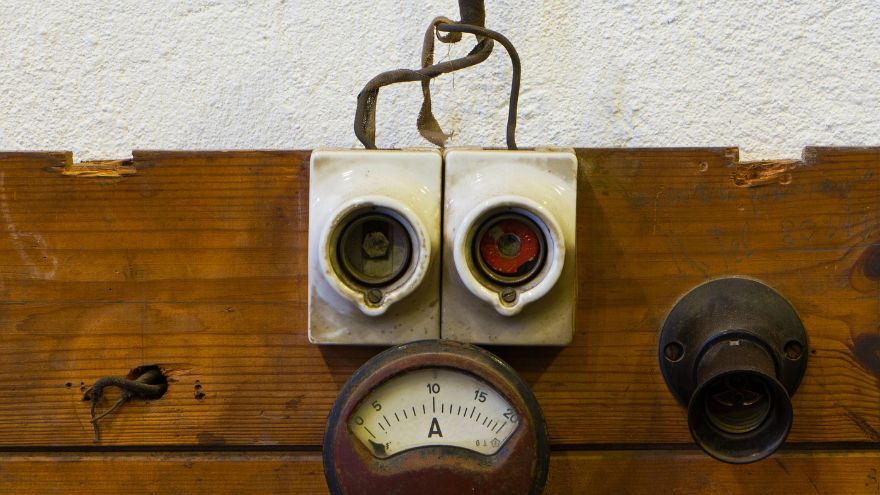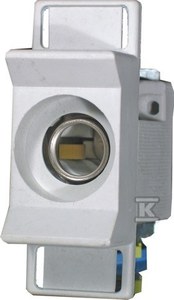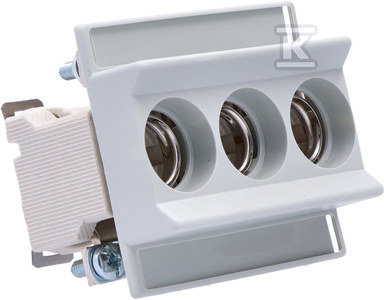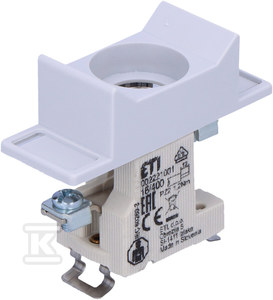Fuse sockets are used in electrical installations to protect electrical circuits against overload or short circuit. Fuse sockets are mounted in distribution boards, where they are connected to individual electrical circuits. How are they constructed? How do the different types differ from each other in terms of design? What should you pay attention to when choosing them?

Check fuse sockets at the Onninen wholesaler
What is the fuse socket for?
 Fuse sockets are important elements of protection for electrical and electronic installations. Their use is to enable the installation of various fuses, such as fuse links. Fuse sockets with inserts are necessary to ensure safety when a certain current value is exceeded. They are an integral part of fuses and as such are installed in various electrical installations - both for home use and in industry.
Fuse sockets are important elements of protection for electrical and electronic installations. Their use is to enable the installation of various fuses, such as fuse links. Fuse sockets with inserts are necessary to ensure safety when a certain current value is exceeded. They are an integral part of fuses and as such are installed in various electrical installations - both for home use and in industry.
Fuse links are placed in fuse sockets, which in the event of a failure melt, causing the circuit to break. Fuse sockets protect against current overload and prevent possible damage to cables or other installation elements. The parameters of the fuse socket and insert must be appropriately selected for the specific installation.
How powerful should a fuse socket be?
A frequently asked question concerns the selection of a fuse socket in terms of power. This parameter should be adapted to the properties of the insert placed in the socket and is important for ensuring proper protection of the electrical installation, both in domestic and industrial installations.
 There are several factors to consider when making your choice. The first value of the rated current. This value is marked on the fuses using colored indicators on the fuse links, which makes identification easier.
There are several factors to consider when making your choice. The first value of the rated current. This value is marked on the fuses using colored indicators on the fuse links, which makes identification easier.
Another criterion is the type of installation and its specificity. It is necessary to distinguish between domestic and industrial installations - they differ in terms of power and load. Well-selected fuse links guarantee effective protection against overloads and failures, and are therefore also a key element of the safe operation of the entire electrical installation.
Which fuse socket should be used for a DIN rail and more?
When choosing a socket, the type of fuse used, especially the fuse head, is also important. The fuse socket must be compatible in terms of thread and operating voltage. An important aspect is the material from which the fuse socket is made. They are usually made of porcelain or plastic with good insulating properties.
More and more installations use DIN mounting rails. They constitute a standard that facilitates the adjustment and subsequent assembly of individual elements. If this type of rails are used in a given application, it is necessary to make sure whether the sockets are intended for installation in this way. Individual sockets differ in their intended use for mounting on different types of rails. These can be type O (DIN-3, TH 35, TS 35), type C (C20, C30, C40 or C50) and type G (DIN-1, TS 32).
Fuse sockets at the Onninen wholesaler
The socket, as an important part of the fuse, has a huge impact on the operational safety of the entire installation. Therefore, by using our offer, you will buy only proven, high-quality sockets and inserts intended for installation in both industrial and home applications.
 The ETI D0 fuse socket for TH D02N-K E18 rail is used for mounting fuses in distribution boards. The rated voltage of the socket is 400 V and the rated current is 63 A. The socket is designed for mounting on a DIN rail. It has a cover that protects the fuse against mechanical damage.
The ETI D0 fuse socket for TH D02N-K E18 rail is used for mounting fuses in distribution boards. The rated voltage of the socket is 400 V and the rated current is 63 A. The socket is designed for mounting on a DIN rail. It has a cover that protects the fuse against mechanical damage.
The ETI D0 fuse socket (3p) for TH D02N/3-K E18 rail is intended for installation in switchboards to safely protect electrical circuits against overload or short circuit. The socket is designed for D02 fuses, which are commonly used in electrical installations.
The ETI D0 fuse socket for TH D01N-K E14 rail is designed to ensure safe use. The socket has a cover that protects the fuse against mechanical damage and against accidental touching of live parts.